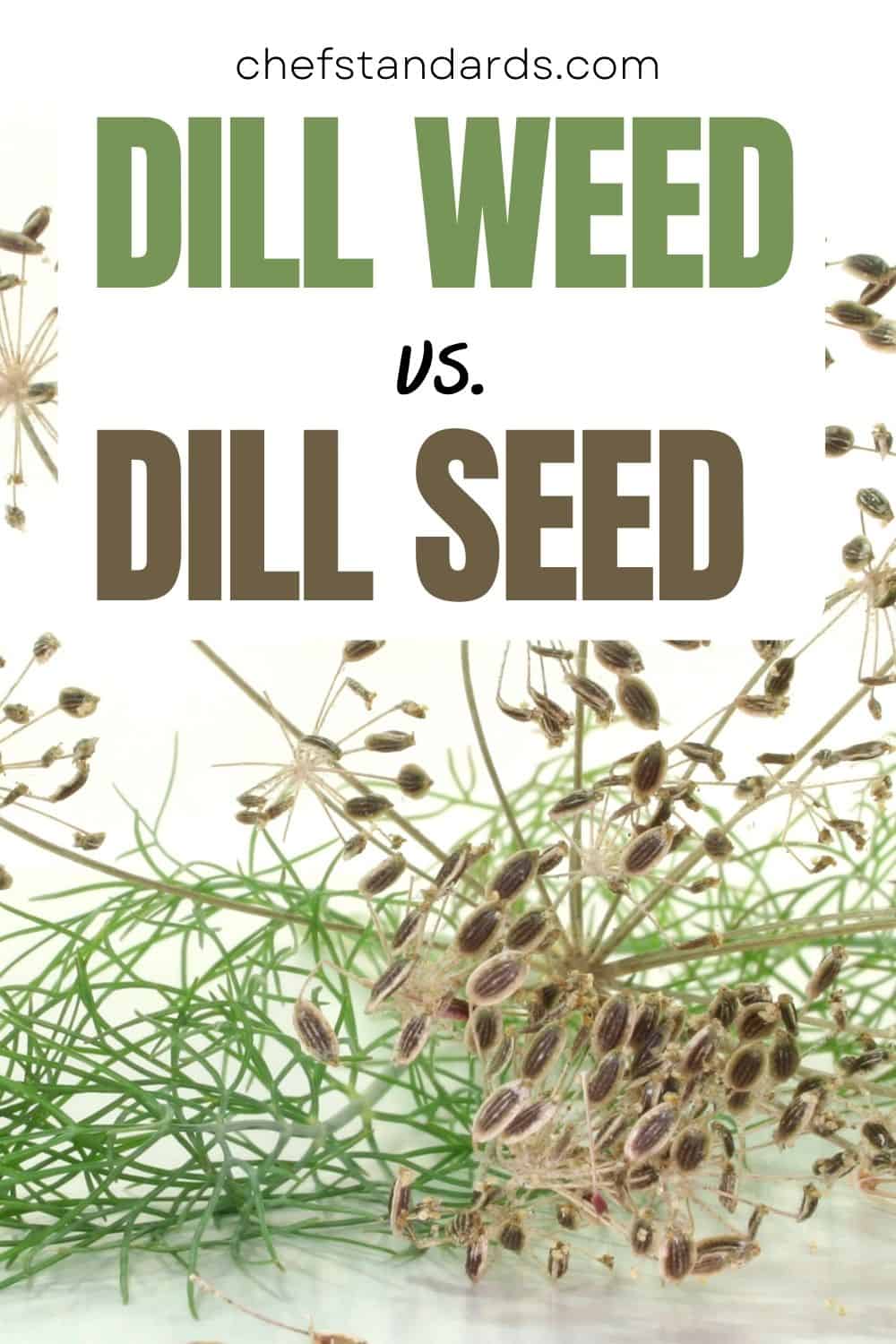When you say “dill”, most people here in the US immediately think of pickles because they are such an important ingredient in it.
However, there is much more to say about dill and there are many reasons for that since most people are actually unaware of the fact that there are different forms of dill.
Dill can offer you dill weed, as well as dill seed. You have to know that, even if they come from the same plant, they are actually quite different.
So in this article, you will find out what the differences are, as well as some similarities between these two, so that you can’t make a mistake when using them in your kitchen.
First, Let’s Talk About Dill
Dill, scientifically known as Anethum graveolens, is an annual herb belonging to the celery family (Apiaceae), and it is a fragrant plant that loves sunny weather.
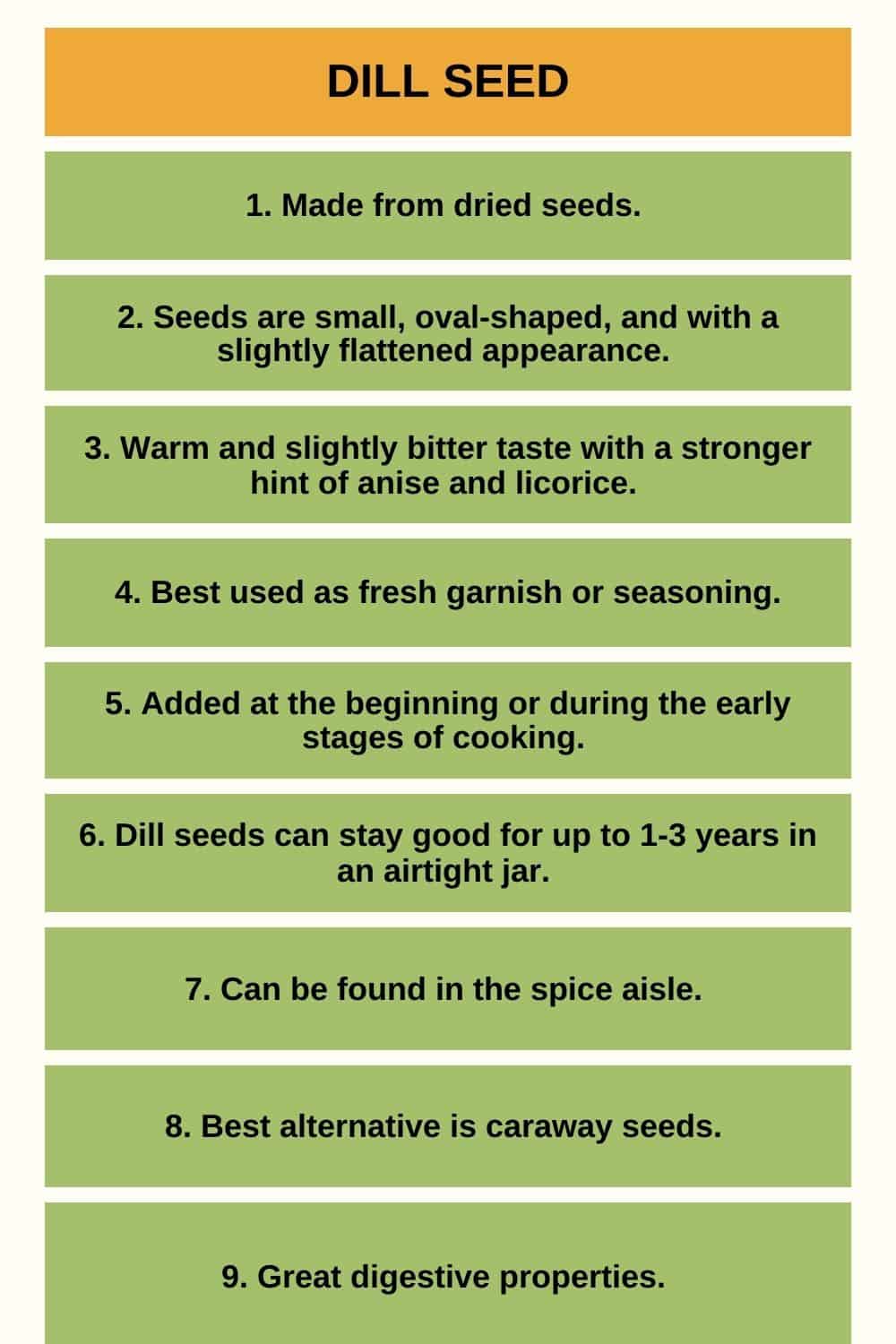
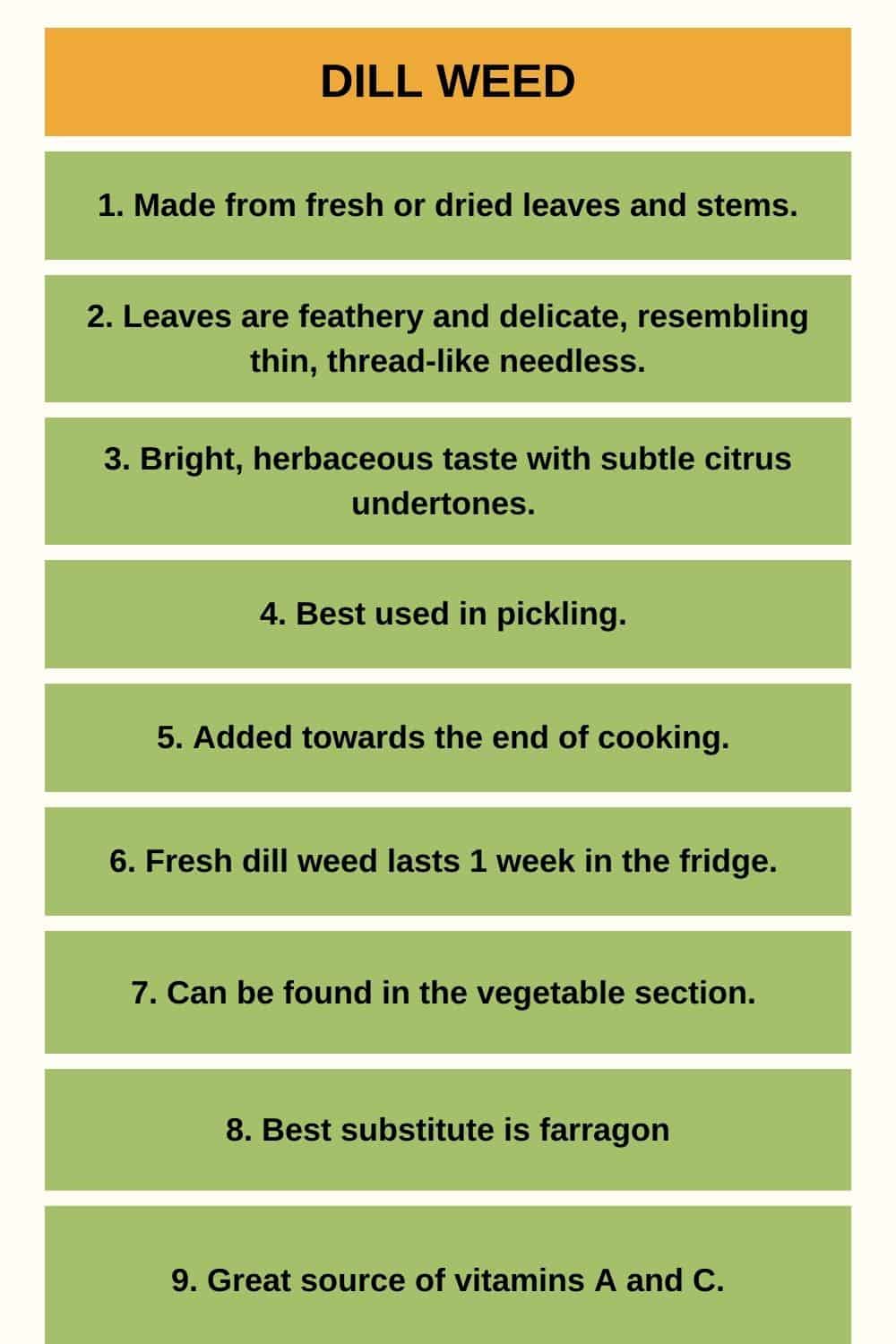
One great thing about this plant is the fact that, although it originated in places with warm climates, it can survive in temperatures as low as 25°F. The only thing that it needs is a lot of sun.
Because of that, it grows in colder weather, and you can find it in countries with cold climates, including Ukraine, Hungary, and Poland.
Now, what’s important for us, is about parts of the plant, more precisely the edible parts. Namely, the main parts of a dill plant include leaves, seeds, and flowers.
Dill plant provides us with their leaves and seeds to use in our kitchens.
You can easily conclude what dill seeds are, but you have to know that dill weeds are actually the leaves of the dill plant.
You can find them in their fresh and dried form, whereas the dried leaves are more concentrated in flavor than fresh ones.
I also have to emphasize that, in most grocery stores, you will find a label that states “dill”. Know that it is most likely fresh dill weed. In most cases, a label on the package that states “dill weed” will carry fresh dill leaves within it.
When it comes to dill seeds, the same name will always be labeled on the packaging, so there shouldn’t be any confusion.
9 Key Differences Between Dill Weed And Dill Seed
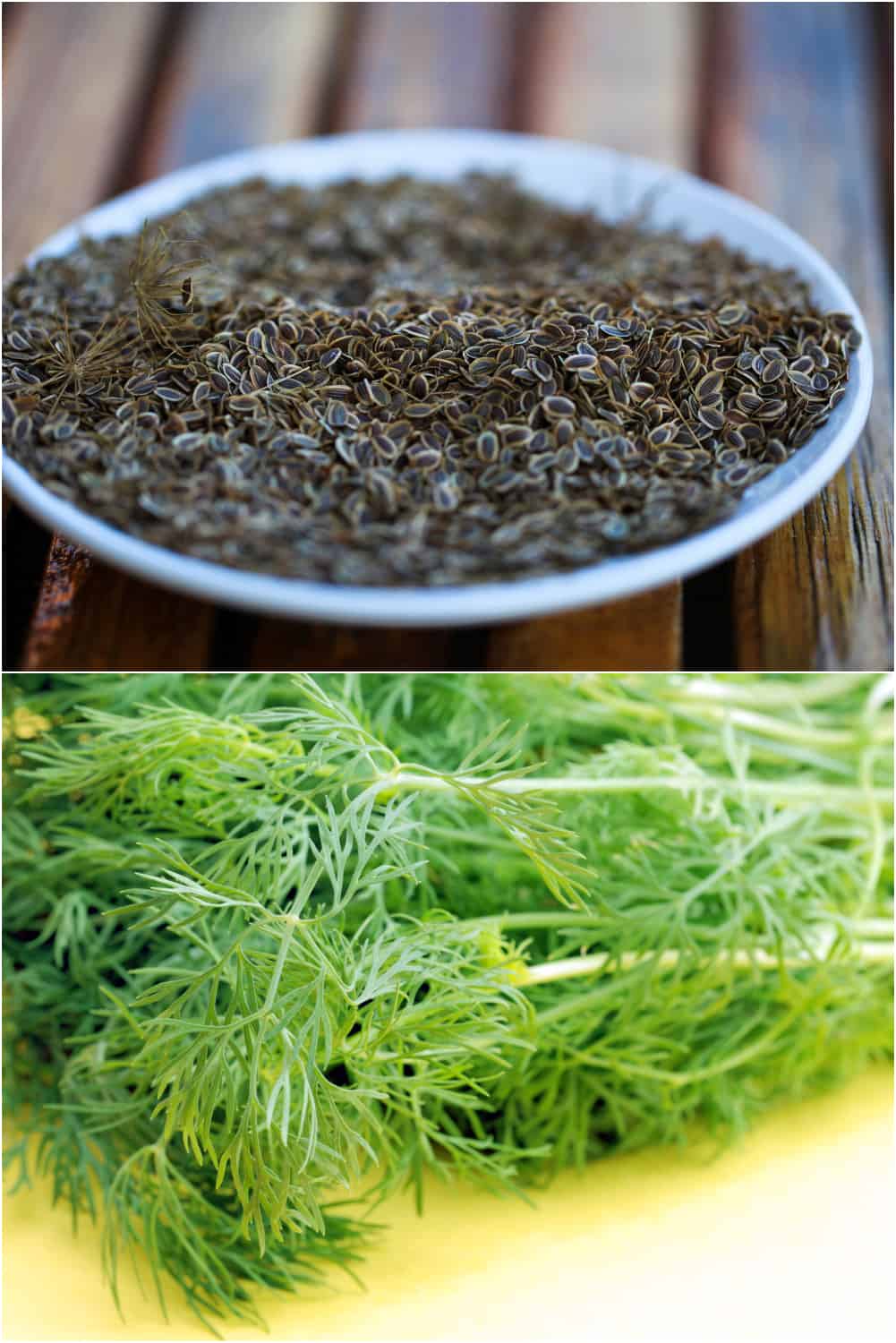
They come from the same plant, but dill weed and dill seeds have some major differences, especially in terms of flavor. You should therefore be aware of it in order to know which one to use in your future recipes.
1. Core Difference
From the previous part, you already know what dill weed and dill seeds are, but it is not out of hand to explain it again in more detail.
As the name suggests, dill seeds are a type of ingredient that is made by drying the seeds of the dill plant. I have to emphasize that the seeds are always dried before they are packaged into this exact product.
Dill weed, on the other hand, is an ingredient that is actually made from the leaves and stems of the plant. Those parts of the plant are, in most cases, fresh, and used in dishes.
However, you can also use them in their dry form, but you have to know that dry dill weed has a more concentrated flavor.
2. Appearance
One consists of leaves and the others are seeds, so it is logical that they differ in appearance.
To start with, the leaves are feathery and delicate, resembling thin, thread-like needles. They are bright green in color and have a soft texture. They grow in clusters along thin stems, giving dill weed a wispy and airy appearance.
When it comes to dill seeds, I would describe them as small, oval-shaped, and slightly flattened.
The seeds are light brown to brown in color and have a smooth texture. They are relatively small, typically measuring around 3-5 mm in length.
3. Flavor Profile
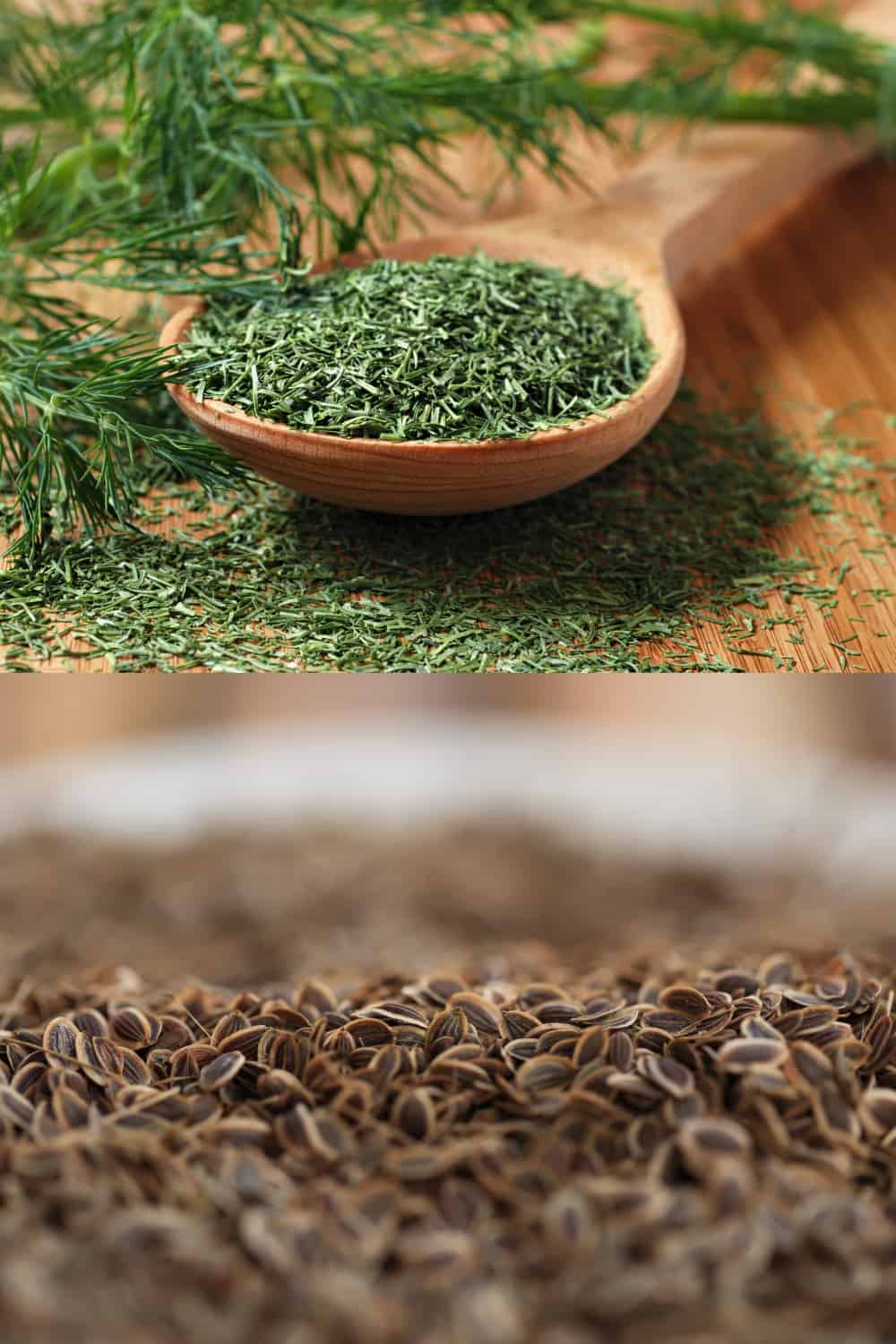
In my opinion, this is the most important part of all. Knowing the flavor profile of some food or ingredient is essential when planning to incorporate it into your dish.
In this case, it is even more important because the flavor profiles of these two ingredients are quite different.
Dill weed, especially when fresh, imparts a milder taste compared to dill seeds.
The leaves have a delicate nature that adds a subtle herbal note to dishes without overpowering other flavors. It has a fresh and vibrant flavor profile, offering a bright, herbaceous taste with subtle citrus undertones.
I would describe the flavor of dill weed as being reminiscent of parsley and fennel, with a hint of anise or licorice. I also have to emphasize that dill weeds play an important role in Greek seasoning, one of the best substitutes for Italian seasoning.
Dill seeds are an entirely different story, as they have a more pronounced and concentrated flavor compared to dill weed.
The seeds possess a distinctively warm and slightly bitter taste with a stronger hint of anise or licorice. They offer a robust and aromatic profile that enhances the overall flavor of dishes.
I also have to mention the earthy undertones with a warm, slightly spicy character. They are especially dominant when the seeds are toasted or ground, and they also release a richer aroma and add depth to almost every recipe.
4. Different Uses
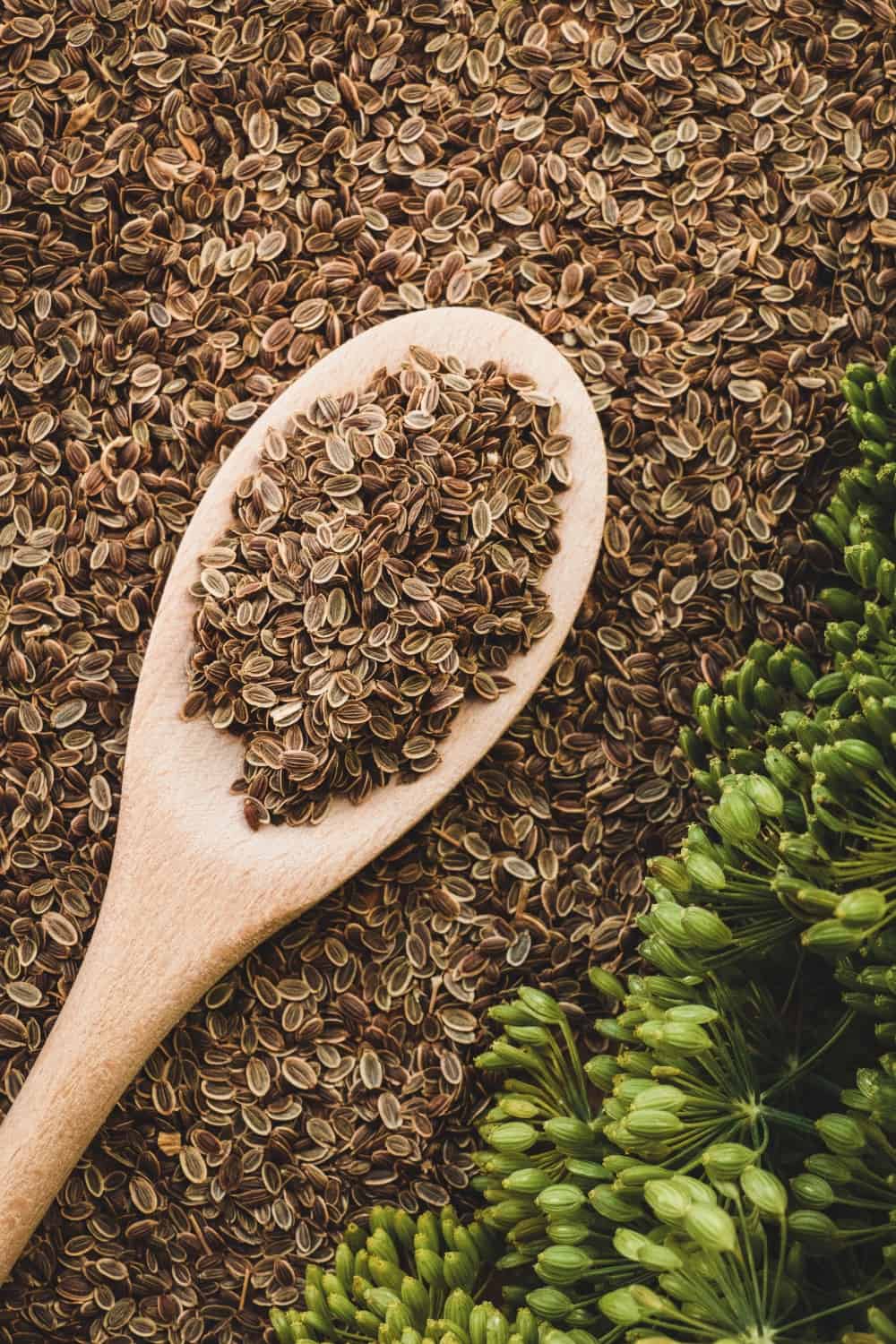
There are many ways to use these ingredients in your kitchen, but the most popular one is definitely in pickles.
Both dill weed and dill seeds can be used for this purpose, but I would recommend that you use the seeds.
This is because their stronger flavors complement the acidity of pickles perfectly.
Dill seeds are also frequently used as a spice in baking, particularly in bread and pastry recipes.
You can also use them in spice blends, such as curry powder or garam masala, to enhance their flavor complexity.
Personally, I mostly employ them in savory dishes like soups, stews, and roasted meats. They infuse these dishes with their distinctive flavor and can complement flavors in dishes like lentil soups, curries, or roasted chicken.
When it comes to dill weed, I often use them as a fresh garnish and seasoning in my dishes. It adds vibrant green color and a refreshing herbal note to salads, soups, stews, and sauces.
I also sprinkle it often over cooked vegetables, roasted potatoes, or grilled fish to enhance their flavor and appearance.
And let’s not forget their herbaceous flavor that pairs well with seafood, particularly in dishes like fish filets or shrimp. I also like to combine their flavors with the flavor profile of salmon, especially oven-roasted ones. The flavor profile of rockfish is also a great pairing.
It also complements the flavors of yogurt-based dips and dressings, such as tzatziki. And, finally, you can incorporate it into egg dishes, potato salads, pasta salads, and cucumber-based recipes.
5. Different Cooking Times
Although there aren’t too many differences between the two when it comes to cooking time, there is one very important thing to be aware of.
Namely, dill weed is milder and more sensitive when compared to dill seeds, so it is best to add it towards the end of the cooking process to preserve its fresh flavor and delicate aroma.
Adding it too early or cooking it for an extended period can cause it to lose its vibrant taste and appearance. It is commonly used as a garnish or stirred into dishes just before serving to maximize its impact.
Dill seeds are different because they require some cooking time to release their full flavor and aroma.
They are therefore often added at the beginning or during the early stages of cooking to allow their flavors to develop and blend with the rest of the ingredients.
Also, they can withstand longer cooking times without losing their characteristic taste, making them suitable for recipes that require extended simmering or slow cooking.
6. Shelf Life And Proper Storage

They both come from the same plant, but dill weed and dill seeds differ even when it comes to shelf life and proper storage.
If you are dealing with fresh dill weed, you can store them in the refrigerator where they will stay good for about 1 week.
If you want to extend their shelf life, just trim the ends of the stems and place them in a jar or glass of water.
After that, it is important that you put the plastic bag over the leaves and store them in the fridge.
Alternatively, you can wrap the dill weed in a damp paper towel and place it in a plastic bag before refrigerating. Remember to check and discard any wilted or discolored leaves before using.
If you want to preserve them for longer, you can also freeze dill weed. All you have to do is to put fresh dill weed in the cooking sheet, pre-freeze them, transfer them to a freezer-safe bag, and put them in the freezer for up to 6 months.
It is much easier with dill seeds. You can just put them in an airtight jar and they will stay good for up to 1-3 years.
However, I would recommend you consume them within 6 months if you want to enjoy their best flavors.
7. Dill Weed Vs Dill Seed: Where To Buy?
In most grocery stores and supermarkets, you will find dill weed in fresh form and it is mostly in the vegetable section.
If you prefer the dry version, go to the spice aisle. Both forms of dill weed can work well in recipes, but if you have a recipe with dill weed as a prominent flavor, it’s best to go with the fresh version.
The spice aisle of your local grocery store or fresh food store is almost always the place where you can find dill seeds.
If you don’t want to buy it at the grocery store, you can also harvest and dry it yourself if you have dill plants.
8. Substitute For Both Condiments

If you don’t have one of these ingredients at hand, you don’t have to worry because they have their own good alternatives.
If your recipe calls for dill weed but you don’t have any, you can replace it with tarragon. Like dill weed, it also has a slight anise or licorice-like taste.
However, you have to be aware of the fact that it offers a more intense and assertive flavor, so you might use it in a slightly lesser amount.
Tarragon pairs particularly well with chicken, seafood, and eggs, but it can also be suitable for recipes that can benefit from a stronger, herbal, and slightly sweet flavor, such as certain dressings, marinades, and sauces.
Also, always use fresh tarragon in place of fresh dill weed, as well as dried tarragon in place of dried weed.
On the other hand, if you are out of dill seeds, your best bet is to use caraway seeds as a substitute. The flavor is much the same, but it is also slightly stronger. However, the difference is not so pronounced, so you can freely use it in a 1:1 ratio.
You can use it in most dishes that require dill seeds, but caraway seeds work particularly well in some Eastern European dishes, such as bread, sauerkraut, and certain savory dishes.
If you can’t find any caraway seeds, you can also opt for celery, coriander, and fennel seeds, as they also work quite well as a substitute for dill seeds.
9. Nutrition And Health Benefits
Finally, I want to say a few words about the medical uses of both types of ingredients. As you probably already know, dill plants are quite healthy, so it is logical that their leaves and seeds carry some benefits as well.
Dill weed is an excellent source of vitamin C that has many health benefits, and one of the most prominent ones in terms of dill seeds is its anti-infection properties.
Dill weed is also great for your eyes and skin because it contains quite a high amount of vitamin A.
Finally, dill weed is free of cholesterol and low in calories, so it is an excellent addition to dishes to help control human blood cholesterol levels. This is also due to antioxidants, dietary fibers, and various vitamins.
When it comes to dill seeds, they are best known for having great digestive properties and contain flavonoids and monoterpenes that act as anti-bacterial agents.
They are also a great source of calcium, as one tablespoon of dill seeds provides approximately 8% of the recommended daily value for calcium. You already know that calcium is great for bone health, so eat dill seeds for stronger bones.
There are two other interesting benefits of dill seeds that you probably didn’t know about. Since dill seeds are packed with vitamins and enzymes, they can act as a sedative and relax the body. This can help you fight insomnia.
Finally, if you have problems with bad breath, chew some dill seeds since their carminative properties help combat bad breath.
Are They Interchangeable?
And the final and most important question is whether you can substitute dill weed and dill seeds for one another or not.
Although there might be cases where they can be used interchangeably, like for example in pickles, I really wouldn’t recommend using them as a substitute for one another.
The biggest reason lies in the fact that dill seeds have a much stronger flavor when compared to the mild flavor of dill weed.
Because of that, I would recommend you to use dill weed mostly as a garnish for your dishes, or add it towards the end of cooking just to give it some extra flavor and aroma.
On the other hand, use the seeds directly in the dish to infuse with the other flavors and give your dish a bit of taste that it deserves.
